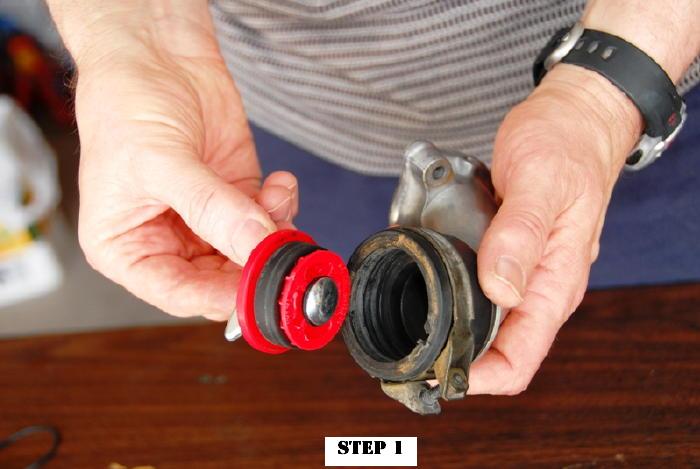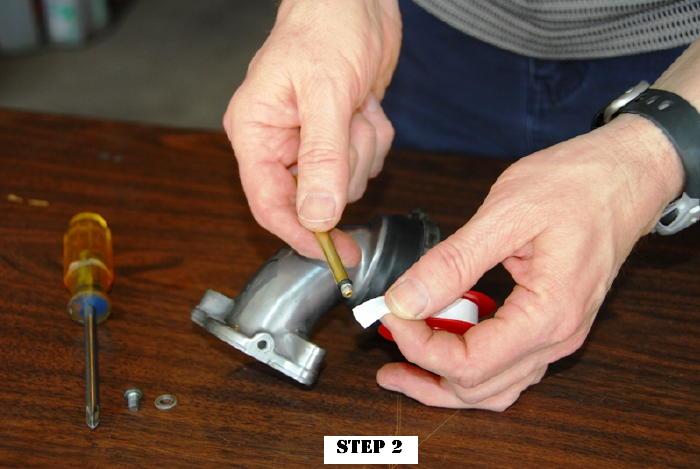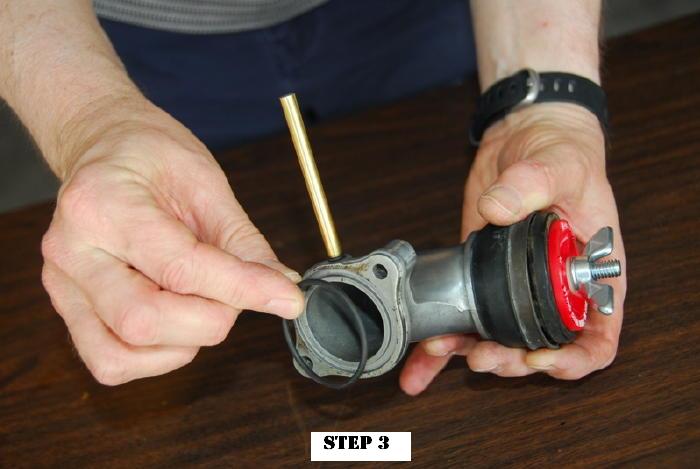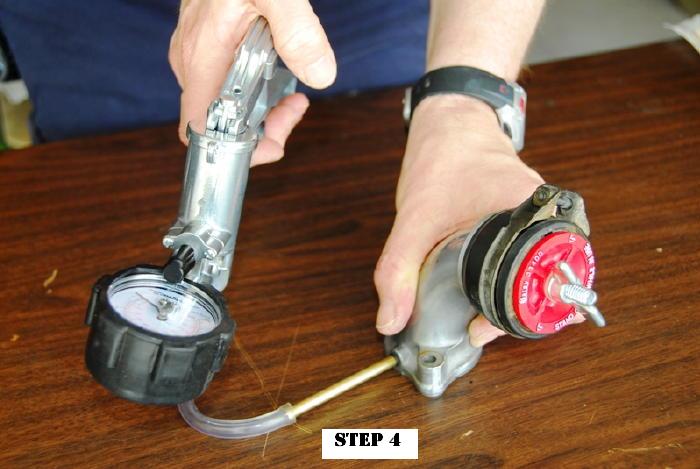This Tech Tip is provided courtesy of Fred Reckling of Las Vegas, NV.
In my Honda GL1000 Carb Rebuild video, I show the method I use for testing intake runners for hidden leaks. I use rubber stoppers and a vacuum pump for this testing. My method works very well, but sometimes folks have a challenge finding the right size rubber stoppers and the hose barb needed to duplicate my rig.
Fred Reckling devised a slightly simpler method that works very well. This method works for GL1000, GL1100 and GL1200 intakes.
Insert 1 1/2 inch expandable pvc pipe test plug (available at the local hardware store) in rubber end of intake runner and tighten until snug.
Remove screw and washer from metal end of intake. Tape the threads of a carb synchronizer probe with teflon (do not block hole) and install in test port screw hole on runner.
Temporarily install new o-ring in groove of intake runner.
Attach vacuum-pump tester’s hose to test probe, place metal end of runner flat on a smooth table’s surface with o-ring in place. While applying downward pressure, pump a vacuum sufficient to adhere the intake to the table and observe gauge for testing.
Repeat for other three intakes and be sure to retape the test probe for before each test.
Fred Reckling – Las Vegas, NV
Note from Randakk:
Good work Fred!







what can be symptoms of such leak outlined in the thread above?
i had a dark mixture (excess fuel/carbon maybe?) visibly leak out of my intake plenum after a ride.
my bike also has a very slight misfire at higher under heavier load while riding.lower rpm cruisinng it is almost un noticable thinking an air leak from this o ring could be the culprit
I have synced the carbs perfectly but i still get that annoying chain rattle sound. If I mess with the #1 adjuster i can make the rattle go away at idle, but i hear it again at different rpm at different times almost at random. The bike runs beautiful on the highway and has tons of power and torque. Using alot of fuel though it seems. 1978 gl 1000 with 35k miles.
Vince
PS – Do you know of any 78 experts near me here in southern wisconsin?
Vince,
From your comments it appears like you are experiencing the typical primary chain rattle. There is no provision on the early engines for controlling slack in the primary chain. With wear, these can cause a characteristic diesel like “rattle.” This nuisance noise appears at idle and disappears under load. It is of no real concern and can be controlled through accurate tune-ups with special attention to ignition timing and carb synchronization.
GL1000s have solid mechanical valve lifters which require periodic adjustment. Accurate valve lash is critical for maximum performance and smooth idle.
Thank you for your inquiry,
Norton
Randakk Customer Service Team